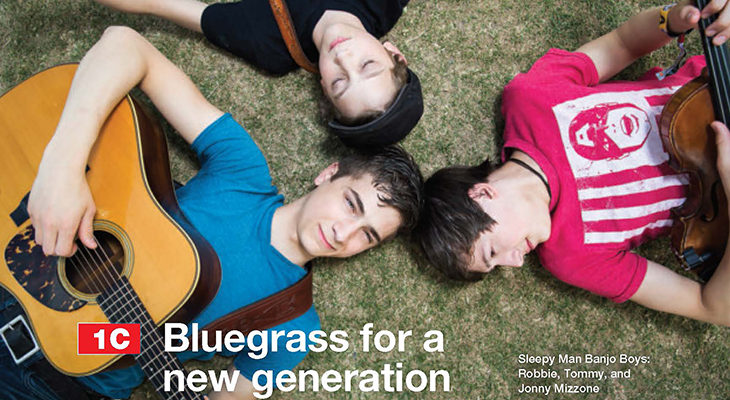What’s the best level for introducing TED Talks?
All levels, including beginners.
Teachers and learners love TED Talks because they feature big, fascinating ideas that learners want to talk about. And with the right TED Talk, one that offers a big idea and the opportunity for students to learn and use relevant language, TED Talks help to teach learners at all levels how to communicate their own ideas and how to connect with people in English.
An example from a course book
It’s the level of the classroom activity we need to focus on, not the level of the input. National Geographic Learning’s Keynote series begins at A1 level, and offers some good examples of this principle in action. Keynote 1, unit 1 (pages 20–21) features the TED Talk Bluegrass virtuosity from … New Jersey? One of the first things you notice about the video is that it’s mostly a musical performance, which reduces the language load. The language you do hear definitely isn’t A1 level: We discovered bluegrass a few years ago, and we fell in love with it. We hope you guys will too. This next song is an original we wrote called “Time Lapse,” and it will probably live up to its name.
However, that language isn’t the focus of the activity. After watching the talk, students match the boys with their age, name and the instrument they play. They then practice introducing the three characters – This is Tommy. He’s 15 and he plays the guitar. They even do some critical thinking work – making inferences from a relatively simple statement in the video. “Presentation skills” takes the form of introducing yourself. The task gives students the satisfaction of using authentic input and completing a level-appropriate exercise connected with it.
And there you have it! A level-appropriate A1 lesson based on a TED Talk!
Try this!
Choose a short TED Talk, or part of a longer TED Talk, preferably one with something visually interesting in it. Suggestions: Mark Bezos: A life lesson from a volunteer firefighter (4:07); Daria van den Bercken: Why I take the piano on the road … and in the air (9:30); Munir Virani: Why I love vultures (6:34); Camille Seaman: Haunting photos of polar ice (4:11). Watch the talk and think of ways you could discuss the ideas in it with your students, without having to understand every word the speaker says. Try focusing on what you can see, and on what you can hear beyond spoken words!
For more English language lessons featuring TED Talks, check out National Geographic Learning’s Keynote, World English, 21st Century Reading, 21st Century Communication and Perspectives!
Stay tuned for the next post in Lewis’ series about using TED content in your ELT classroom called You can use a TED talk without the sound – try it! Out next month!
Author: Lewis Lansford
Lewis got his first taste of teaching English in Barcelona in the late 1980s. The experience inspired him to get a Master’s in TESOL, after which he taught at a university language center in Arizona and then a manufacturing company in Japan. In 1995, he took an editorial job with a major publisher in Hong Kong developing materials for Asia, and in 1997 became a freelance editor, project manager and writer in the UK. He has worked on books, videos, tests, audio materials, worksheets, apps and online materials for English learners of all ages across the world. Lewis is an author for National Geographic Learning’s Keynote and Perspectives series.



‘There’s a way to do it better – find it!”, as Thomas Edison once said, has metamorphosed into teaching “Keynote”, Intermediate, the former school year in my classes. Trying to always surpass limits, theories, teaching strategies, I have discovered in “Keynote’ series a real friend. However, willing to leave the door of knowledge open, I am ready for ever new challenges! Well done so far! Monica Giuchici, Romania
Thanks for the comment! That’s a good quotation from Edison, and wonderful news that Keynote works well for you and your students.
However, willing to leave the door of knowledge open, I continue teaching “Keynote” Upper Intermediate. What I highly appreciate about the Keynote series is the way units unfold, analytically, i.e., including the integrated skills approach – listening, watching,identifying key points, interweaving vocabulary and grammar structures, pronunciation drills, and leading into Critical Thinking, Presentation Skills, interpersonal communication, only to be thrown into the whirlpool of life. And which is more, which topic could encompass all previous items but “Identity”, whilst finally presenting a personal brand name? Well, that’s marvelous! And to make things complete, I am sliding into the large human ocean, called Walt Whitman and his “Song of Myself”. What a jewel! Thank you, Lewis, for your comment! Monica
Whitman – another great reference! Thanks!